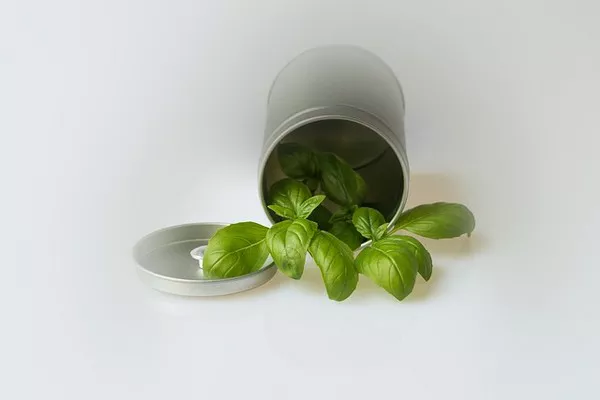Basil (Ocimum basilicum), a fragrant and versatile herb, has long been cherished for its culinary and medicinal applications. Whether grown in gardens, pots, or indoor containers, basil requires careful attention and proper harvesting to ensure optimal flavor, growth, and yield. In this guide, we will delve into the art of harvesting basil plants, discussing various techniques, timing, and essential tips that will empower both novice and experienced gardeners to yield the best results.
Understanding Basil Plant Growth
Before delving into the intricacies of harvesting basil, it’s important to understand the growth patterns and structure of the plant. Basil is a fast-growing annual herb that produces lush, aromatic leaves in various sizes and shapes, depending on the variety. It is characterized by its tender stems, paired leaves, and propensity to develop side shoots.
Basil plants often exhibit a branching growth habit. Pruning and harvesting these side shoots not only encourage bushier growth but also prolong the overall harvest period. Additionally, regular harvesting prevents the plant from flowering prematurely, which can negatively impact the flavor and quality of the leaves.
Optimal Timing for Harvesting Basil
The timing of basil harvest significantly affects the flavor, aroma, and overall quality of the leaves. While it’s tempting to pluck leaves as soon as they appear, a strategic approach yields the best results. Generally, basil plants can be harvested when they have developed a minimum of 6 to 8 leaves on each stem. This ensures that the plant has sufficient foliage to continue thriving after harvesting.
The best time of day to harvest basil is in the morning, shortly after the dew has evaporated. At this time, the leaves are at their freshest and most flavorful, as they have not been exposed to the heat of the day. This practice also minimizes the risk of wilting, which can occur when harvesting during the heat of the afternoon.
Harvesting Techniques
Basil leaves can be harvested using various techniques, depending on the intended use and the stage of growth of the plant.
1. Pinching:
Pinching is a fundamental technique for harvesting basil. It involves using your fingers or pruning shears to remove the uppermost portion of the stem, just above a pair of leaves. This encourages the growth of side shoots and prevents the plant from becoming too tall and spindly. Pinching is an excellent method for maintaining a continuous supply of fresh basil leaves.
2. Full Stem Harvesting:
If you require a larger quantity of basil for a specific culinary endeavor, you can opt for full stem harvesting. In this method, entire stems are cut just above a pair of leaves or at the junction where they meet the main stem. While this approach temporarily reduces the plant’s foliage, it can be particularly useful when making pesto or preserving basil leaves.
3. Selective Leaf Harvesting:
This technique involves selectively plucking individual leaves from various stems. It is ideal for when you need a few fresh leaves to garnish a dish or add to a salad. Selective leaf harvesting minimizes the impact on the plant’s overall growth and is suitable for regular culinary use.
Tips for Successful Basil Harvesting
To ensure successful basil harvesting, consider these essential tips:
1.Avoid Overharvesting: While basil is a resilient herb, excessive harvesting can stress the plant and hinder its growth. Never remove more than one-third of the plant’s foliage at a time. This ensures that the plant retains enough leaves for photosynthesis and continued development.
2. Harvest Before Flowering: Basil plants have a tendency to bolt, or produce flowers, as they mature. Once flowering begins, the leaves can become bitter and less flavorful. Harvesting regularly and pinching off flower buds helps prolong the plant’s productivity and maintains leaf quality.
3. Use Clean Tools: When harvesting basil, always use clean and sharp pruning shears or scissors. Clean tools reduce the risk of spreading diseases and ensure clean cuts that promote faster healing for the plant.
4. Choose Healthy Stems: Select stems that are healthy, robust, and free from signs of disease or damage. Avoid stems with yellowing leaves, as these may indicate nutrient deficiencies or other issues.
5. Harvest Intact Leaves: When plucking individual leaves, try to avoid tearing or damaging them. Intact leaves have a longer shelf life and retain their flavor and aroma better than torn ones.
6. Store Properly: To prolong the freshness of harvested basil leaves, place them in a container with a few inches of water, similar to a bouquet of flowers. Alternatively, wrap the leaves in damp paper towels and store them in a plastic bag in the refrigerator. Using harvested basil promptly preserves its quality.
Conclusion
Harvesting basil is both an art and a science. A combination of careful observation, timing, and technique ensures that you enjoy the best flavor and yield from your basil plants. Whether you’re snipping a few leaves for a fresh salad or planning to make a large batch of pesto, understanding the growth patterns and employing appropriate harvesting methods are key to successful basil cultivation. With the insights provided in this guide, you are now equipped to confidently cultivate and harvest basil plants that thrive and enhance your culinary creations.


